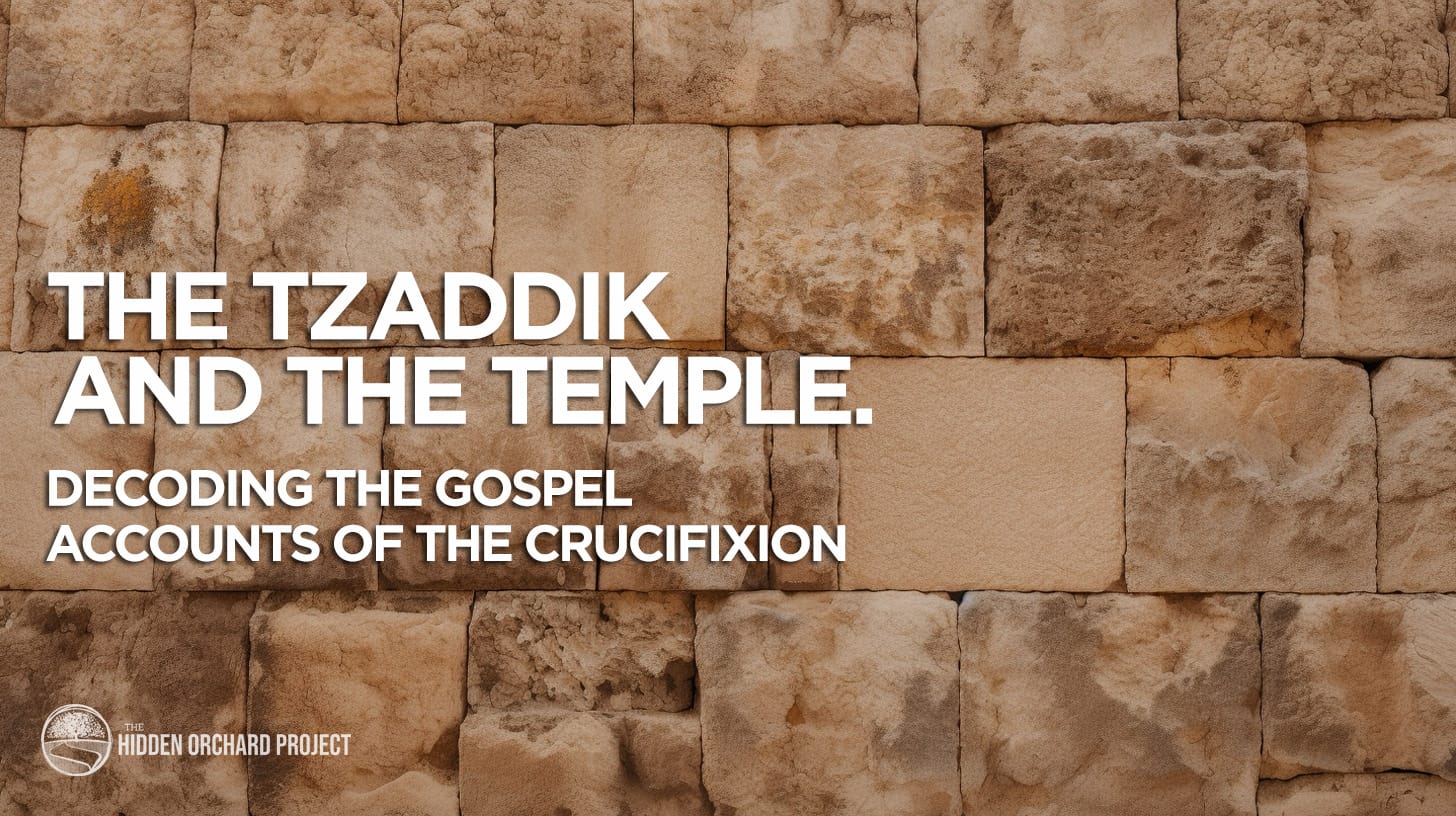The Tzaddik and the Temple: Decoding Gospel Accounts of the Crucifixion
Considered obsolete by Christians, the Temple is still mourned by Jews. Is there a place for the Temple in the future, or has this been replaced by Jesus?

The Book of Leviticus opens with the inauguration of the Tabernacle, and the voice of G_D calling to Moses. The world would never be the same.
Beyond its religious significance, the Tabernacle / Mishkan (משכן) and the subsequent Temples / Beit haMikdash (בית המקדש) were the epicenters of communal gatherings, festivals, and celebrations for the nation of Israel.
On a spiritual level, the Temple served as a kind of portal to the Creator—a stargate to the upper worlds—from which humanity fell, and will ultimately return. At one end of the line, our current world of limitation, at the other, the World to Come¹.
The House of G_D
The Bible dedicates quite a bit of focus to the building plans for the structure, modeled after the spiritual Temple above.
When they were in sync, holiness flowed between the upper and lower worlds, remediating sin and infusing blessing into the world.
The courts even included space for the nations, and the prophets speak of a time when the nations would recognize its purpose and beauty.
But ever since its destruction², all of humanity has sunk continually deeper into impurity and disconnect. The Temple's loss is still mourned by Jews, and its restoration is prayed for daily.
Misconceptions
Unfortunately, the church has largely perceived the Temple system as barbaric. Obsolete. Some readers of the New Testament are unclear on what to think about it, though recognize its reference in the Book of Revelation. Many hold the idea that its function has been replaced by Jesus.
While this replacement view is incorrect, there is a root idea in the Rabbinic tradition that the Gospels seem to convey. And it is the connection between a tzaddik (righteous person) and the Temple that we will explore.
The Tzaddik
The self-sacrificing stories of the patriarchs, and particularly Moses, offer allusions to the atoning power of the righteous³. There are many parallels between the tzaddik and the Temple—but both function as a ladder, restoring the path between G_D and man.
Foreseeing the destruction of the Temple(s) on the horizon, a Midrash relays a conversation between Moses and the Creator. Moses asked:
"When Israel will have neither Tabernacle or Temple What will happen to them as regards atonement?”.
[The Creator] replied, “I will take a righteous man. From among them and make him a pledge on their account, and I will atone for their iniquities”’
- Exodus Rabbah 35:4
Destroy This Temple
The Book of John shares an interesting connection that hints at this tradition:
“Jesus answered and said to them, “Destroy this temple, and in three days I will raise it up." ... But he was speaking of the temple of his body.”
- John 2:19,20
I believe Jesus was not implying that he'd replace the Temple—he was tapping into a deeper idea from this Midrashic tradition.
Destruction of the Temple
The Sages taught of this interconnection between Messiah and the Temple, stating that Messiah was born on the day the Temple was destroyed⁴.
While some take this in a literal sense, as in the Messiah was born that a specific day, there is also a veiled connection to what we stated above—a functional parallel between the Messiah and the Holy Temple.
More explicitly, the Sages state:
...the death of the righteous is equivalent to the burning of the Temple - Rosh Hashanah 18b

